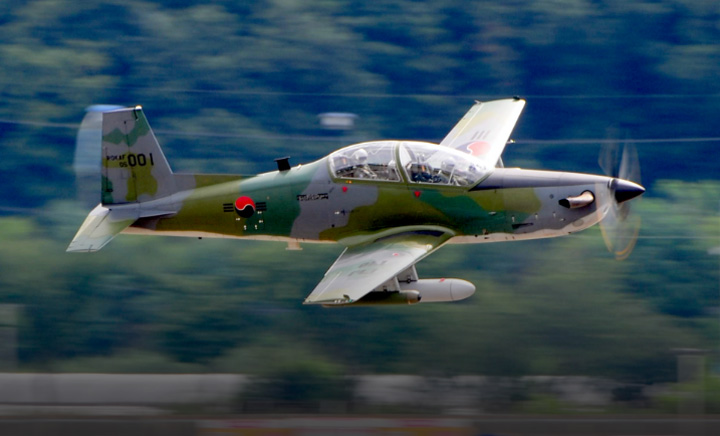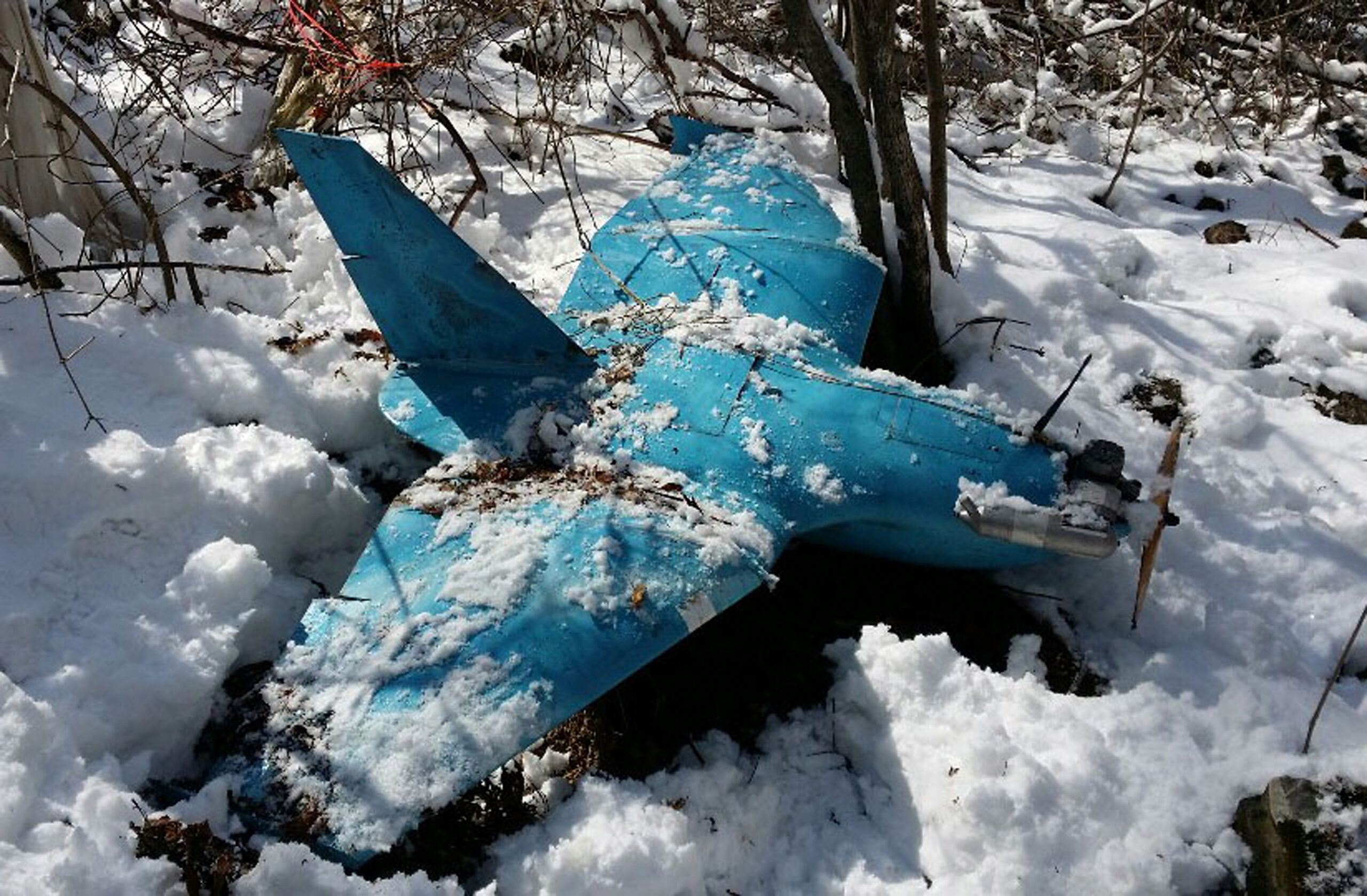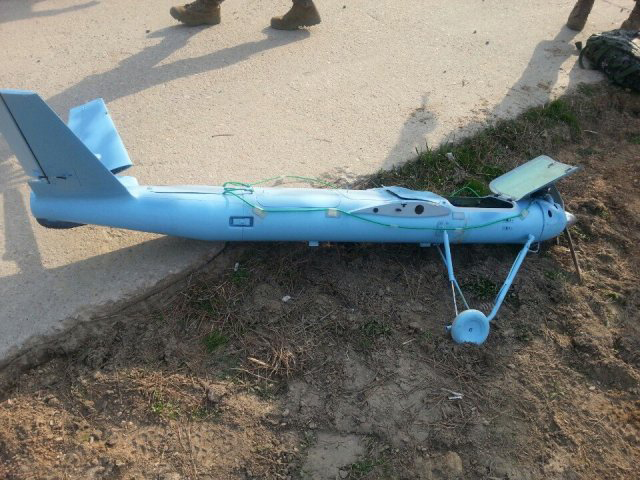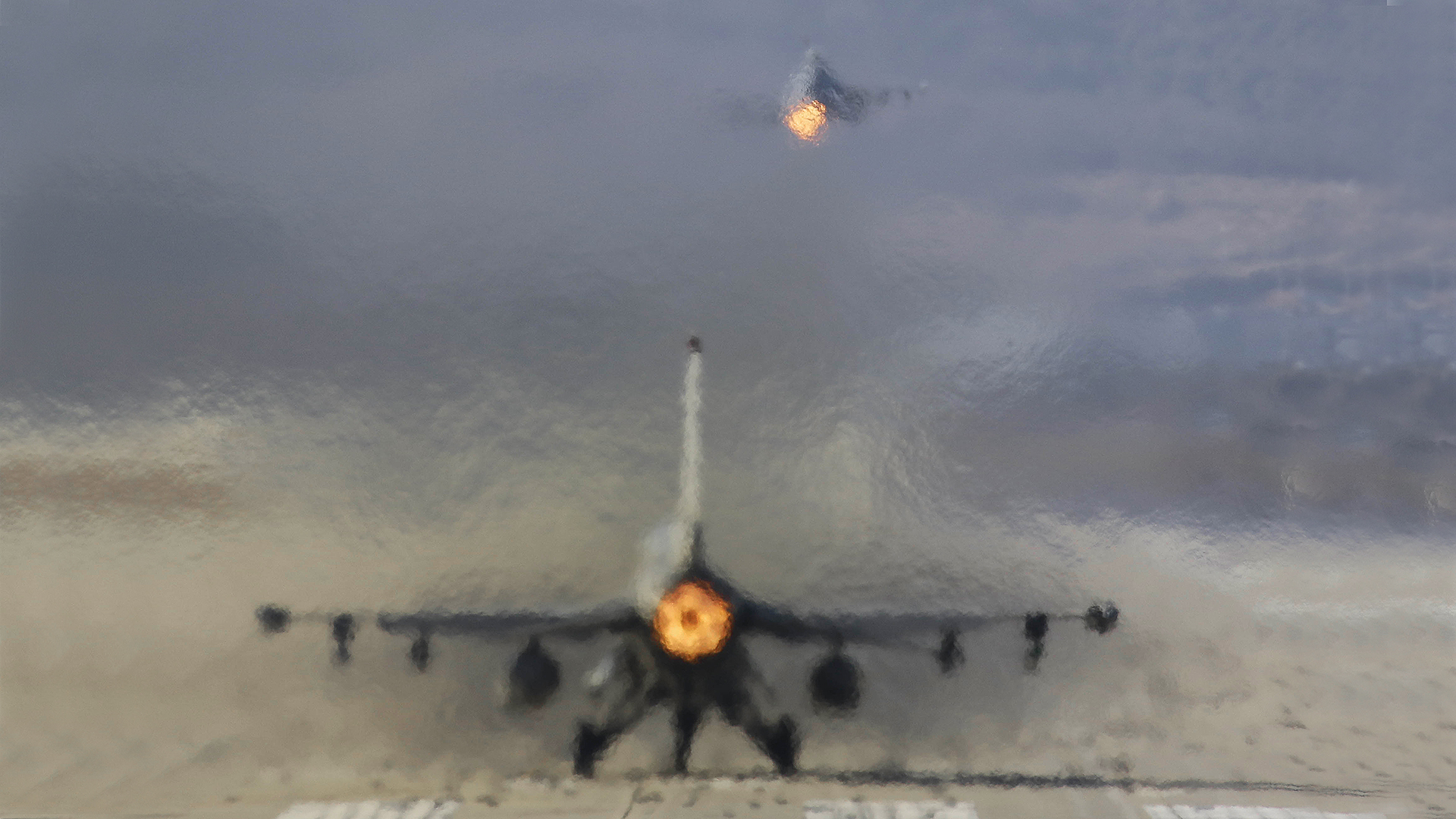South Korea’s military on Monday responded to the first North Korean cross-border drone intrusion in five years by scrambling fighter jets, attack helicopters and other assets, including a light attack aircraft that crashed upon takeoff.
The two crew members of the KA-1 propeller-driven light attack aircraft parachuted to safety, according to The Associated Press, adding that a total of five North Korean drones entered South Korean airspace. The KA-1 is a weaponized version of South Korea’s KT-1 trainer and can carry 70mm rockets and a 12.7mm machine gun pod.

The incident began just before 10:30 A.M. Seoul time Monday after South Korea’s military detected several “unknown objects,” presumed to be North Korean drones, according to South Korea’s Yonhap News Agency.
They were spotted in border areas of Gyeonggi Province, according to Yonhap, citing an official at the Joint Chiefs of Staff.
“The vehicles flew across the Military Demarcation Line separating the two Koreas, and were spotted flying in those areas in Gimpo, Ganghwa Island and Paju, leading to [the] temporary suspensions of civilian flights,” according to Yonhap. One of the five drones traveled as far as the northern part of the South Korean capital region, which is about an hour’s drive away, AP reported, citing South Korea’s Joint Chiefs of Staff.
“The military responded by firing warning shots and launching fighter jets and attack helicopters to shoot down the North Korean drones,” according to AP. “The attack helicopters fired a combined 100 rounds but it wasn’t immediately known if the North Korean drones were shot down. There were no immediate reports of civilian damage on the ground in South Korea, according to the Defense Ministry.”
In addition to responding in its own airspace, South Korea also sent “surveillance assets near and across the border to photograph key military facilities in North Korea as corresponding measures against the North Korean drone flights, the Joint Chiefs said,” according to AP. Though the Joint Chiefs didn’t elaborate, “some observers say that South Korea likely flew unmanned drones inside North Korean territory,” according to AP.
“Our military will thoroughly and resolutely respond to this kind of North Korean provocation,” Maj. Gen. Lee Seung-o, director of operations at the South Korean Joint Chiefs of Staff, told reporters.

Seoul’s public acknowledgment of any reconnaissance activities inside North Korea “is highly unusual and likely reflects a resolve by the conservative government led by President Yoon Suk Yeol to get tough on North Korean provocations,” AP reported. “North Korea could respond with more fiery rhetoric or weapons tests or other provocation, some observers say.”
Monday’s incident came amid already heightened tensions on the Korean Peninsula. On Friday, Pyongyang fired two short-range ballistic missiles (SRBMs), an apparent response to a joint U.S.-South Korean military exercise.
“We are aware of the ballistic missile launch and are consulting closely with our allies and partners,” U.S. Indo-Pacific Command said Friday in a statement. “While we have assessed that this event does not pose an immediate threat to U.S. personnel or territory, or to our allies, the missile launch highlights the destabilizing impact of the DPRK’s unlawful WMD and ballistic missile programs. The U.S. commitment to the defense of the Republic of Korea and Japan remains ironclad.”
On Dec. 20, the U.S. flew B-52 bombers and F-22 stealth fighter jets in a show of force against North Korea, according to the South Korean Defense Ministry (MoD).
That deployment, for joint drills with South Korean warplanes, “was part of an agreement to protect South Korea with all available means, including nuclear,” South Korea’s MoD said, according to CBS.
The drills, which also included South Korean F-35 and F-15 fighter jets, took place in the waters southwest of Jeju island, the MoD said.
“The U.S. F-22 jets were deployed in South Korea for the first time in four years” and stayed throughout the week for training with South Korean forces, the MoD said.
Ballistic missile launches from North Korea have become fairly routine as such incidents go. But they too have become more provocative. Clearly, the North is pulling any levers it can shy of armed conflict to get attention. The first time it has sent drones across the border since 2017 is more evidence of this.
“This is a clear provocation and an invasion of our airspace by North Korea,” Lee, the South Korean Joint Chiefs of Staff director of operations, said during a briefing.
While North Korea has mainly used small and crude reconnaissance drones in the past, it is known to have larger types, including those that are similar to target-drones. In addition, there have been indications that the regime has worked to clone Chinese designs and generally improve in this area in recent years. This includes developing more capable ‘man-in-the-loop’ types and those that are based on commercial developments.



It is a foregone conclusion that North Korea has closely watched developments in Ukraine, and especially those surrounding the use of Iranian-made Shahed-136 drones and Ukraine’s own improvised long-range kamikaze drones, and will tweak its own technological development, procurement, and operational plans accordingly. Such systems could be highly problematic for South Korea and fit exactly into the type of overwhelming and layered chaos North Korea plans to deploy in the opening stages of a cross-DMZ conflict.
Contact the author: howard@thewarzone.com
